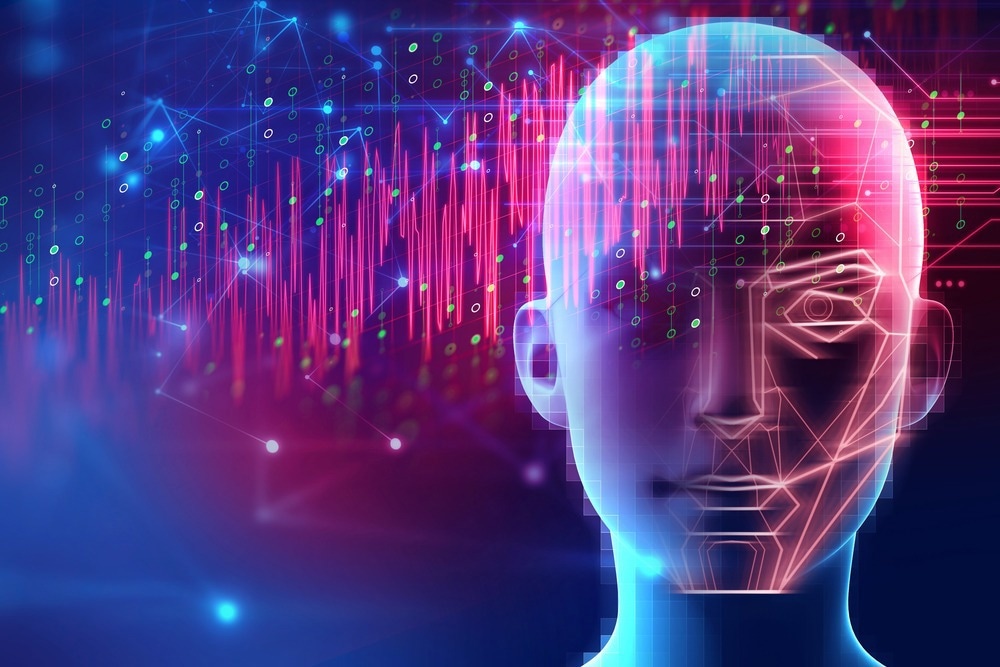Wearable strain detectors that can accurately measure muscle and joint motion are extremely attractive for developing full-body movement sensors. However, many wearable detectors do not provide configurable options for matching sensor features with particular joint/muscle deformation limits, resulting in unsatisfactory performance.

Study: Topographic design in wearable MXene sensors with in-sensor machine learning for full-body avatar reconstruction. Image Credit: whiteMocca/Shutterstock.com
A recent study published in the journal Nature Communications tackles this problem by constructing a wearable MXene detector with built-in machine learning (ML) algorithms for full-body movement detection and avatar reconstruction.
Motion Sensing for Avatar Reconstruction: Overview and Challenges
Full-body motion sensing is important for many unique applications, such as athletic performance assessment, human-machine interfaces, patient therapy evaluation, and individualized avatar reconstruction in virtual and augmented reality.
A key prerequisite for full-body movement detection is the ability to precisely and quickly predict the location and alignment of human body joints and muscles.
Current techniques for full-body movement tracking use digital imaging equipment, like cameras, to collect a sequence of pictures or videos from quantifiable movement data. However, these traditional full-body motion detection systems face several significant problems.
One major disadvantage is that these imaging technologies are made of stationary, costly, and cumbersome equipment, rendering them difficult to transport and inadequate for monitoring distant and moving objects. In addition, privacy and data safety issues can limit the use of cameras in public places. Moreover, graphics processing units (GPUs) are generally required to analyze pictures/videos in external data stations, presenting issues such as high bandwidth requirements, hardware costs, and energy consumption.
Wearable Sensors: The Future of Avatar Reconstruction
An alternate technique for precise full-body movement sensing and avatar reconstruction includes wearable strain detectors that can physically adapt to the changing joint areas of the human body to capture physiological information.
The multi-joint movements of the body need a collection of strain detectors with high sensitivity in distinct strain ranges for accurate motion sensing. Conventional commercial strain detectors have insufficient customizability to meet the strain variations of specified joints/muscles, resulting in inaccurate sensing signals and poor signal-to-noise levels.
In addition to calibrating the parameters of the strain detector, another problem is transmitting, storing, and processing the raw sensor data acquired via numerous signal collection channels. An innovative method for doing this is to analyze time-resolved sensor information locally, significantly lowering transmission bandwidths and energy consumption as well as improving data latency and safety.
A Wearable MXene Sensor for Avatar Reconstruction Applications
Two-dimensional (2D) nanostructures are frequently used in creating wearable electronics for various applications. Among these nanomaterials, the recently discovered MXene group has sparked significant interest in the research and development of wearable electronics.
MXene materials provide strong electrochemical and photonic characteristics, as well as variable surface functionality. Higher electrical conductance and programmable surface functional groups, in particular, have allowed MXene materials to be employed in a variety of electronic systems, including enhanced medical systems, optoelectronic devices, and energy-related industries.
The researchers developed a wearable MXene sensor with integrated machine learning algorithms for full-body movement categorization and customized avatar reconstruction in this study.
MXene nanosheets were specifically chosen for the production of piezoresistive nanosheets because of their outstanding electrical conductance, ease of integration, and processing simplicity. Wrinkle-like topographies were produced differentially on MXene nanolayers by exploiting the interfacial instabilities during localized thermal softening.
Key Findings of the Study
The operating ranges of the MXene strain detectors were set from 6 to 84% via topographic engineering, matching the strain limits of all the joints without compromising ultrahigh sensitivity. The wireless MXene sensor unit could constantly stream multi-channeled sensing information, which was used to build an Artificial Neural Networks (ANN) network suitable for accurately detecting a wide range of full-body movements.
Lastly, an edge sensor was created by combining wearable MXene strain detectors with an edge computer chip, allowing the built-in Convolutional Neural Network (CNN) to produce individualized avatar reconstruction in virtual/augmented reality.
Based on these results, it is reasonable to conclude that the wearable MXene sensors with edge computer chips described in this study are highly adaptable and may aid advancements in a variety of disciplines, including wearable productivity devices in athletics and underwater soft robotics.
Reference
Yang, H. et al. (2022). Topographic design in wearable MXene sensors with in-sensor machine learning for full-body avatar reconstruction. Nature Communications. Available at: https://www.nature.com/articles/s41467-022-33021-5
Disclaimer: The views expressed here are those of the author expressed in their private capacity and do not necessarily represent the views of AZoM.com Limited T/A AZoNetwork the owner and operator of this website. This disclaimer forms part of the Terms and conditions of use of this website.